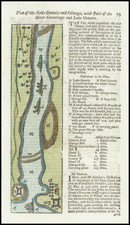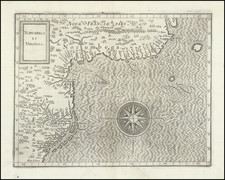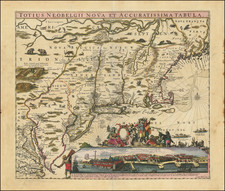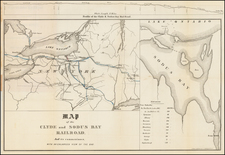Potentially of Archaeological Interest.
Intriguing 1854 plat map of the now-abandoned town of Marysburgh along the Claverack Creek in present-day New Forge State Forest, New York.
The map shows the city's buildings in profile, including the Livingston House, the grist mill, and the store. Three dams along Claverack Creek and a bridge are shown. Lot layouts are provided and street names include "Manor Street," "Hudson Street," "Mill Street," "Main Street" "Stone Street," and "Forge Street."
The village of Marysburgh was developed by the Livingston family around 1770, which used the Claverack River to power forges termed the New Forge Iron Works. Inspired by the successes of their nearby forges, including at Ancram, the Livingston family engaged in this venture, but it was evidently not as successful as hoped as they abandoned the forges before 1798. However, as evidenced by the present map, settlement at Marysburgh continued into the 19th century, with a Grist Mill apparently still in operation in 1854. Dwelling in the village is recorded as lasting until 1876.
The map was made on the verso of a partial profile plan of a railroad, showing the elevation of the railroad over distance. The title of the plan reads "Profile of the ___sto Creek Route."
The Livingston Family
The Livingston family was one of the most prominent families in Colonial America. Robert Livingston the Elder (1654-1728), a successful fur trader and merchant, was granted Livingston Manor in New York's Hudson River Valley in 1715, which was accompanied by huge swaths of land and enormous prestige. The manor passed through his family for several generations before reaching Robert Livingston (1708-1790), the third and final Lord of Livingston Manor.
During the American Revolution, Livingston family members were heavily involved in the war effort. A drafter and several signers of the Declaration of Independence were Livingstons, as was the first Secretary of Foreign affairs, and the first Governor of New Jersey. Livingston family members continued to hold important positions well after the Revolutionary War, but the end of primogeniture and the division of the Livingston family lands gradually reduced the prominence of the family.












![[ New England / Northeast / Canada ] Tierra Nueva](https://storage.googleapis.com/raremaps/img/small/86737.jpg)



